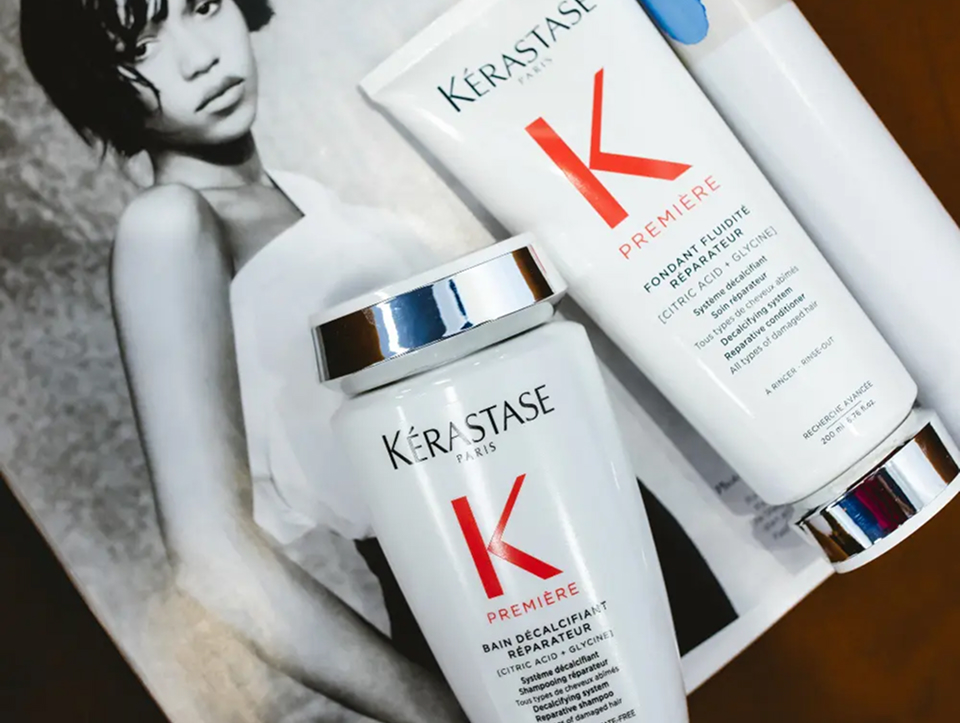Are you struggling with dry, brittle, or damaged hair? Perhaps your strands feel lifeless, frizzy, or prone to breakage despite regular use of shampoo and conditioner.
That’s where deep conditioning, also known as a hair mask or intensive treatment, comes in. It delivers rich moisture, protein repair, and long-lasting shine, giving your hair renewed softness and resilience.
At Häste Urban Hair Spa in Medford, MA, our deep conditioning treatments penetrate deeply into the hair shaft, restoring its natural elasticity, smoothing the cuticle, and sealing in nutrients for up to 30 minutes, accompanied by an optional warm towel or gentle heat.
Worried about product buildup, greasiness, or risking more damage? We choose lightweight or heavy masks tailored to your hair type—no residue, just balanced nourishment and shine.
Experience long‑lasting hydration, reduced split ends, mirror‑like shine, and strength against future damage—all in one luxurious treatment.
What is Deep Conditioning Your Hair?
When a regular conditioner isn’t enough, a deep conditioning mask steps in to provide intensive hydration and protein rejuvenation—especially ideal for chemically treated, heat‑damaged, or aging hair.
It comes in a thick, creamy form, designed to stay on your hair longer than standard conditioners, targeting key issues like protein loss, moisture depletion, and overall dullness. At Häste in Medford, combining our soothing scalp therapy with this treatment delivers an elevated salon experience.
Note: If you have textured or tightly coiled hair, you may benefit more from a targeted protein treatment—ask your stylist during your session.
👉 Curious about how hair changes with age? Read “How Your Hair Changes With Age” to stay proactive.
How Do You Deep Condition Your Hair?

Whether your hair is dry, frizzy, or damaged, a deep conditioning treatment can restore it and make it shine.
You can find many deep conditioners packed with all the nutrients and moisture your hair needs. This process can take up to 45 minutes and requires shampoo, a deep conditioner, and a blow dryer.
Alternatively, you can consider Brazilian Botox, which can help with unruly hair, much like deep conditioning.
👉 Learn the difference between Brazilian Botox and Brazilian Blowout here.
1. Choose The Right Product
The first thing you must determine is your hair care needs. Then you can choose a product based on your scalp and hair type. If you have straight, fine hair, opt for a lighter-textured conditioner. For textured hair, consider using a heavier conditioner.
2. Wash Your Hair
For deep conditioning to be effective, it is best applied to clean, washed hair. Wash your hair with the shampoo that best suits your hair type. It helps remove oil and dirt from your scalp. Still, be mindful that the shampoo you use must not strip the hair follicles of essential oils.
3. Apply The Mask
Once you’ve washed your hair, apply the deep conditioner to the hair shafts only. Coat the ends well with the conditioner. Also, avoid applying the conditioner close to the hair roots. You can then use a wide-toothed comb to help distribute the product through the hair.
4. Allow It To Set
Leave the product in the hair for 30 minutes to an hour, but ensure you read the instructions for the recommended time.
5. Add Heat

Use a warm towel or a hair dryer on a low heat setting to help the treatment absorb more deeply.
👉 Learn more: Air Dry vs Blow-Dry—Which Is Better?
6. Rinse And Seal Cuticle
Flush with cool water to close the cuticle and lock in the treatment.
Repeat weekly for optimal results, or bi-weekly for smoother, shinier hair.
👉 Or visit us for a treatment, and while you’re here, discover the benefits of regular salon visits.
Benefits of Deep Conditioning

Having deep conditioning is one of the best things you can do for hair care, as the benefits are enormous:
Prevents Damage
Deep conditioning your hair helps reduce breakage and split ends, improving overall hair health. While you may think your hair has no damage, regularly incorporating the treatment into your regimen will keep it healthy. It is also an excellent treatment if you have a balayage or have highlighted your hair. Furthermore, it is also part of the aftercare for keratin-treated hair.
Boosts Elasticity
Dry hair can break under tension. To prevent this breakage, you must nourish and moisturize your hair. Conditioning your hair helps improve elasticity and prevent this from happening.
👉 Do you think hyaluronic acid is only hype? Learn more about HA and how it helps to moisturize your hair and scalp here.
Restores Shine
Conditioning your hair allows the product to penetrate the hair shaft, helping to restore a natural shine. Over time, your hair can accumulate a buildup of products you use and environmental factors. Conditioning your hair will leave it smooth and give it a natural shine.
Worthy Note: Are you familiar with the various salon glossary terms? Check them out here to equip yourself with the right terms when you visit the salon next time.
👉 Related Read: Hot Oil vs Warm Oil vs Deep Conditioning and Salon Hot Oil Treatments vs At-Home Treatments
Protects Color-Treated Hair
Coloring or highlighting your hair can cause damage. Coloring alters the structure of the hair strands, making them weaker, drier, and more prone to breaking. Conditioning your hair can help reduce damage caused by coloring.
Do you know how to choose a perfect balayage shade? Find out here. While on the topic of coloring, do you know why we wash hair after dyeing? Curious to find out. Check out our article dedicated to hair coloring.
📝 Learn more about your hair horoscope and what your hair energy says about you.
Moisturizes Hair And Scalp
Healthy hair needs moisture. If you suffer from a dry scalp or dandruff, a deep conditioner can help with scalp care. Your hair will be healthy with the use of protein, water, essential natural oils, and conditioner. Unmoisturized hair can lead to brittle, dry hair that is prone to breakage.
👉 Did you know that co-washing can keep your hair healthy? Check it out here.
To make the most of your conditioning treatments, it’s essential to apply hair products in the correct order for maximum absorption.
✍️ Learn how to do hair damage repair all year round
7 Tips For Deep Conditioning

Now that we have provided you with all the benefits, let us look at some haircare tips to ensure you perform deep conditioning properly.
- You can deep condition your hair regularly, but not daily.
- Always let the conditioner sit for up to 30 minutes, depending on the product you use.
- Try not to over-condition, as it can also make your hair fragile.
- Ensure you have the right ingredients in the conditioner that suit your hair needs.
- Applying heat with deep conditioning helps the product penetrate the hair shaft more effectively.
- Before conditioning, gently pat your hair dry to remove excess moisture. Too wet hair will make the conditioner slide off and not penetrate well.
- Always rinse the conditioner with cool water to help close the hair cuticle and retain moisture.
Still unsure whether a deep conditioning treatment is needed? Why not compare it with our other hair treatments to choose a suitable option for your hair care needs? A fact is that when you do hair relaxing, deep conditioning plays a huge part in the aftercare.
👉 Check out our article on what hair treatment is right for you.
Is Deep Conditioning For You?
Overall, deep conditioning is essential for maintaining beautiful and healthy hair, whether your hair is dry, fine, thick, color-treated, oily, or damaged. It delivers immediate results and long-term resilience.
When you’re ready to give your hair a moisture boost, schedule an appointment with Häste Urban Hair Spa in Medford, MA. Experience the benefits of professional deep conditioning tailored by expert stylists.
FAQ
How does deep conditioning work?
It delivers a potent blend of moisture and proteins that restore strength, softness, and resilience to the hair shaft.
How long should you leave a deep conditioner on?
Typically 30 minutes, but follow product instructions—some masks lightly indicate a range of 30–60 minutes.
How often must I deep condition my hair?
The number of times you need to condition depends on your hair type. For fine and straight hair, you can do it once or twice a month. Dry hair is recommended to be conditioned once a week.
Should I use regular conditioner after deep conditioning?
No. Deep conditioners are formulated to be sufficient—they deliver all hydration and nutrients needed, and an additional conditioner could cause buildup.









